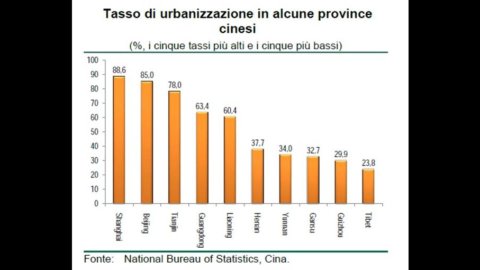In China, the percentage of the population living in cities is still low compared to the average for developed countries, but rising sharply. Urbanization and the growth of wealth have led to a sharp acceleration in the housing market. The rush for property (possible in the country since 1998) has caused a sharp increase in property prices.
In 2010, the price per square meter of a residential/commercial property in Benjing province reached $2.694. In Guangdong, the price has exceeded 1.100 dollars per square meter, an increase of more than 200% in the last ten years. House prices are vastly overvalued relative to average wages.
In order to try to contain the further growth of the bubble, since the spring of 2010, the Chinese government has adopted a series of measures such as increasing the amount required as an advance for the purchase of a property and launching an ambitious subsidized housing plan which predicts that by 2015, 44 million families will be housed in state-subsidised apartments. Also due to the launch of the plan, the number of new building sites opened for the construction of residential properties increased by 19% in May. An alarm for the Chinese bubble still appears premature, and in any case the consequences of its eventual bursting should be less disruptive than in the US case, especially in limiting the spending capacity of households. In China the level of household debt is still low and only a small part of the value of the property is financed with a mortgage.
The weak link in the chain, on the other hand, seems to be represented by construction companies and local administrations. The unsold stock of housing (which also includes housing still under construction) in the first quarter of 2011 increased by 40% y/y, while the debts of the main construction companies amount to a record 1 trillion renminbi (+41,3, XNUMX% y/y).
* Analyst from the Bnl Studies Service (article taken from Focus, the weekly magazine of the service)
Attachments: Focus_n._27_-_8_July_2011.pdf





